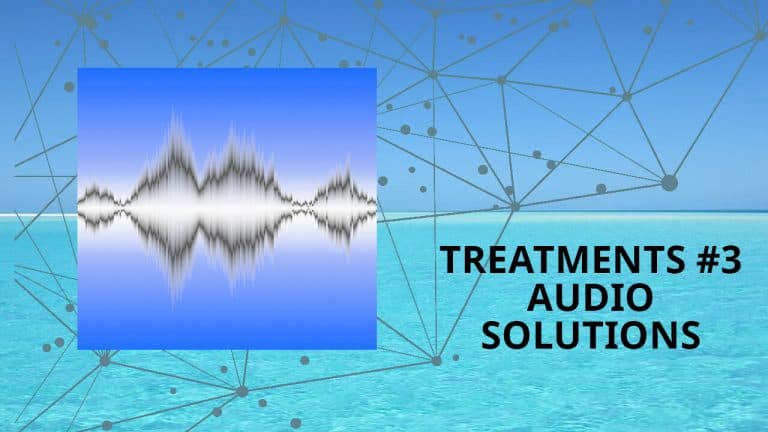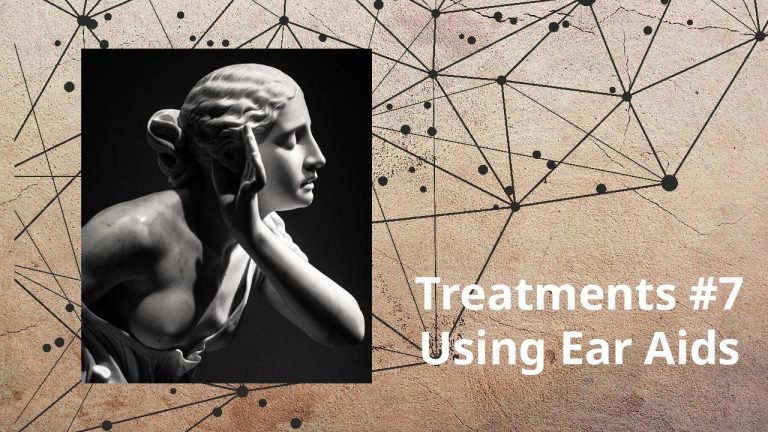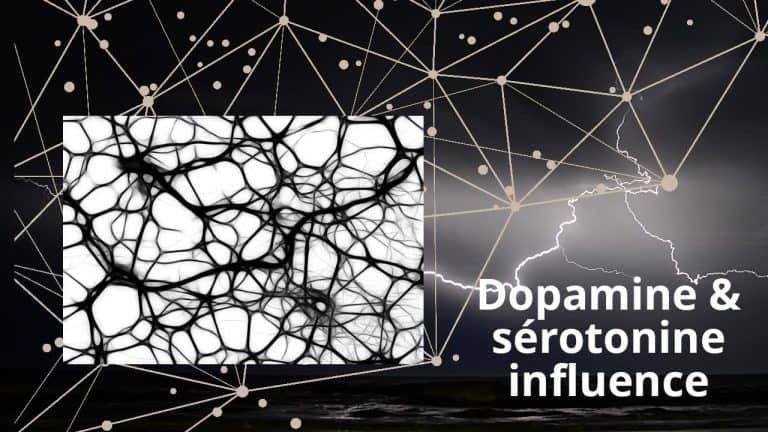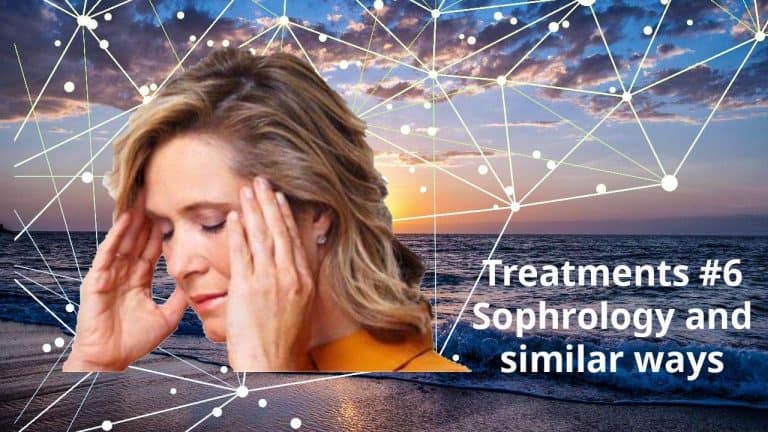Audio Solutions.
Treating a malfunction of the hearing system with a suitable audio solution seems a logical step.
Various approaches have been considered for several decades now.
Potential mechanisms through which sound therapy may act involve masking, habituation, and the reorganisation of the auditory cortex.
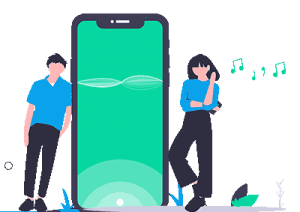
Notched Audio Therapy.
This shall be the best known audio therapy way.
It is also known to be the most effective.
It was developed in Germany, and other studies were conducted in Italy.
Field trials showed a significant improvement in the perception of tinnitus in about 75% of the treated subjects.
Principle of operation.
We are not talking here about the so-called “objectives” tinnitus for which we can identify a cause that we can treat to solve the problem.
In the other cases, which are the most numerous, it seems that tinnitus occurs when the brain tries to adapt to hearing loss.
This then leads to some reorganization of the neural circuits of the brain involved in the sound representation.
A parasitic ‘sound’ appears, it is tinnitus.
This technique aims by a regular listening of targeted sounds and adapted to your tinnitus to work on the circuits of faulty neurons in order to disconnect them.
We can talk here about neurological unlearning.
This technique works with tonal tinnitus which is the most common.
Treatment begins with an identification of the tinnitus frequency.
This is a necessary prerequisite for the definition of the sounds that will be used to process it.
Different types of custom sounds can then be proposed:
They have the particularity of being ‘filtered’ or ‘notched’.
This means that the energy of the sound wave will have been eliminated by an audio processing around the identified frequency of tinnitus: it is the notch.
In summary, Notched Audio Therapy is simply audio that has been processed in a particular way, in accordance with your tinnitus.
Regular listening to these calibrated sounds will lead to a reorganization of the circuits of neurons responsible for tinnitus.
Simple to implement and inexpensive, this method nevertheless requires a minimum of daily practice over a certain period of time to be effective.
It is designed to be used as a long term treatment of the course of several months, but you are likely to notice a reduction in tinnitus volume as quickly as several days into treatment
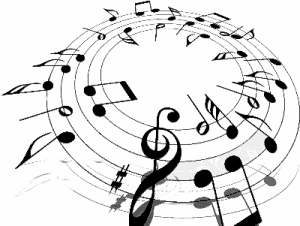
Acoustic Coordinated Reset (ACRT) Therapy
This method is like the previous one based on the principle of neuroplasticity, that is to say the possibility of changing the neural circuits of the brain.
It is therefore also a form of neurological unlearning.
Close to the Notched Audio Therapy, it uses a complex calculation mode to determine the frequencies of the sounds that will be played, and when they shall be played.
Concretely, 4 tones symmetrically linked to the tinnitus tone will be played in an ordered but irregular sequence.
These sounds are also mathematically related to the patient’s tinnitus frequency.
A clinical trial conducted by Professor Peter Tass of the Jülich Research Centre in Germany on a population of 63 people with chronic tinnitus would have demonstrated the effectiveness of acoustic neuromodulation in the treatment of tinnitus.
The treatment was well tolerated, and results showed a significant decrease of tinnitus loudness and symptoms..
Effects gained in 12 weeks of treatment persisted through a preplanned 4-week therapy pause and showed sustained long-term effects after 10 months of therapy.
A reduction of at least 6 TQ points, was obtained in 75% of patients with a mean TQ reduction of 50% among responders.
If you want to learn more:
Acoustic Coordinated Reset Neuromodulation: A Systematic Review of a Novel Therapy for Tinnitus
The Tomatis © Method.
It owes its name to its designer, the French doctor Alfred Tomatis.
It is defined as a natural approach to neurosensory stimulation.
Rather, this method is intended to treat attention disorders, learning, coordination and autism.
It is also used to treat tinnitus.
The Tomatis method aims to stimulate the brain through the auditory system by using an electronic device whose function is to re-educate the ear so that it recovers its previous abilities.
The therapy, conducted under the direction of a licensed professional (more than 2,000 centres worldwide), is based on the use of a portable home device called TalksUp®.
The device, thanks to the sequential use of different filters, intends to intervene on the internal structure of the auditory system.
This is about restoring the original communication between the ear and the brain
Here too, we enter the field of neuroscience, of which the Tomatis® Method is a pioneer.
The home handheld includes many features including the electronic flip-flop, called “Electronic Gating® ”. It is a unique non-invasive process that enables sound contrast effects to be achieved by the sudden shift from low to high frequencies. This back and forth between the low and acute frequencies causes a significant effort of accommodation on the part of the ear and therefore stimulates the brain.
After assessing your listening skills, your Tomatis® professional develops a session program tailored to your profile.
With TalksUp®, you can then follow your listening program at home or in a certified centre.
Functional Sound Therapy
Functional Sound Therapy (FST) implements the listening of targeted musical sequences.
This original and innovative method provides a therapeutic complement in complex hearing pathologies.
This method starts from the somewhat strange assumption that the different proteins have a musical sensitivity.
And so that certain note sequences would allow to modulate the protein synthesis at the peripheral level of the inner ear.
The TSF uses protein music in the form of targeted listening sessions.
This method, based on quantum mechanics, stems from a concept called genocidal.
Regular listening according to a pre-established protocol must modify the perception and the feeling of the pathology by modulating the synthesis of proteins at the peripheral level of the inner ear and associated brain areas.
This certainly interesting technique still needs to be scientifically substantiated.

Others Audio Solutions: Audio Masking Techniques
Let us now turn to several other musical therapies that have in common to offer listening to tinnitus masking noises.
This involves gradually undressing the areas of the brain responsible for the problem.
The use of a noise generator.
White noise is a sound which has at equal intensity all the frequencies humanly perceptible. Sounds like a sizzling radio.
Other noises with different physical characteristics are also used for therapeutic purposes.
Brown noise, white noise and pink noise.
Each of these sounds has different physical characteristics, and can therefore be more or less adapted to each particular case.
Daily listening to these different so-called therapeutic noises could help tinnitus victims to distance themselves from the phenomenon.
We are talking here about therapeutic habituation.
There are also audio solutions that offer a noise generator coupled with active filtration of certain frequencies, depending on the measured frequency of tinnitus.
Here we find the Notch technique adapted to noise generators.
All these masking techniques can be implemented with or without hearing aid. The price will obviously not be the same!
. Daily listening to these various so-called therapeutic noises could help people with tinnitus to more easily initiate the famous habituation phenomenon which results in desensitization of the auditory cortex with regard to parasitic noise.
Tinnitus Retraining Therapy (TRT).
Tinnitus retraining therapy is a form of habituation therapy designed to help people who experience tinnitus.
This therapy, based on the neurophysiological model of Jastreboff (1990), can last from a few months to two years.
This method combines a psychological approachs in combination with therapeutic sound.
It is therefore built on two complementary aspects:
• a psychological aproche involving several sessions of explanation and adaptation with a professional.
• and listening, via a hearing aid or not, to a continuous sound in order to avoid silence.
These two key components of TRT directly follow from a neurophysiological approach of tinnitus. Sound therapy is aimed at weakening tinnitus related neuronal activity while psychological treatment aimed at reclassification of tinnitus to a category of neutral signals .
So the goal of psychological side of TRT is management of the reaction to tinnitus, thereby allowing habituation to begin and return to previous levels of perception.
There are some scientific evidence that Tinnitus Retraining Therapy can reduce or eliminate tinnitus.
But how much does tinnitus retraining therapy cost?
That depends on the clinic that you were to go to, however the cost is usually expensive–around $3000.
Sequencing Sound Therapy.
Sequential Sound Therapy (SST) is a method of treating tinnitus by using a sound generator that produces a wide band of white noise.
It comes from the research of Doctors Miguel Angel Lopez Gonzalez and Rocio Lopez Fernandez.
The idea is to accustom the auditory cortex to the presence of tinnitus by trying to make the brain eventually confuse it with the artificial stimulation produced by the generator.
The intensity of the masking sound will first be higher, then lower than the intensity of the tinnitus, with an intermediate step where the intensity of the mask and that of the tinnitus are equal.
The therapy will start with a total mask (white noise higher than tinnitus), then use a limited mask (white noise equal to the tinnitus intensity).
To finish with a partial mask (white noise of intensity lower than tinnitus).
Depending on whether or not the patient has a hearing loss, an open-ended hearing aid will be added.
It is advisable to wear the sound generator several hours a day especially at the quietest times of the day.
When the sleep of the patient is disturbed, the sound generator can also be used all night.
Successive checks take place every 3 months, then every 6 months and finally annually.
The duration of treatment can be up to 24 months.
Residual Inhibition:
Described in 1971 by Professor Feldman, residual inhibition is a temporary reduction in tinnitus that occurs spontaneously after the patient is exposed to a noise corresponding to the audiometric spectrum of tinnitus.
This method intended to act in a punctual manner proposes to play on a short duration a sound of frequency identical to that of tinnitus.
It is therefore a matter of masking it and inducing a response from the brain that will then tend to ‘be silent’.
For effective operation, the central frequency of the sound stimulus must correspond to the audiometric spectrum of tinnitus.
This assumes of course that tinnitus is subjective and constant in frequency (tonal tinnitus).
An improvement of short or very short duration is sometimes noted in some people.
But even when it works, the fundamental problem remains.
The interest of this technique seems quite anecdotal.

